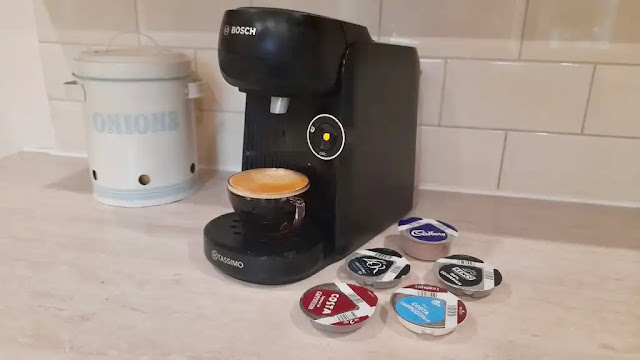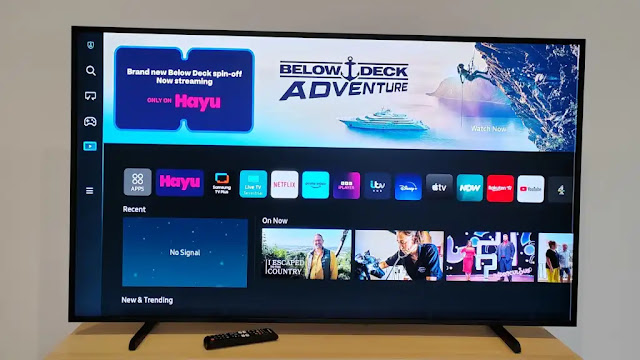Philips new E-line monitors offer a budget way of getting 144Hz at Full HD, albeit with one caveat.
Should I Buy The Philips 242E1GAJ?
Pros
- Inexpensive
- Wide colour gamut
- Fast decoding
Cons
- Pixel response time is poor
- External power brick
- Clunky OSD
Our Verdict
Price When Reviewed
- Unavailable, look for 242E1GSJ
Using a monitor designed for business use for gaming has many issues, but the biggest is the limited refresh rates and the lack of support for variable framerates.
The reason that many users end up using that type of monitor to game is purely cost, as anything with the word ‘gaming’ connected to it appears to attract a premium.
But you can get a monitor that has some gaming credentials that won’t break the bank, as you'll see in our review of the Philips 242E1GAJ.
Out Of The Box
I’d contest that for gaming 24in panels are the bottom limit in size most players should be considering unless available ergonomic space is very tight indeed.
The 23.8in Philips 242E1GAJ comes with a couple of video cables, a laptop-style PSU, the support foot detached and the manual on a DVD-R.
Provided instructions tell the new user to connect the foot and then lift the whole assembly out of its expanded foam protection. The two connect using a thumbscrew, but I’d recommend you use a screwdriver to tighten it more than finger secure.
What struck me as this point was how light the 242E1GAJ is fully assembled at just over 3kg, strongly hinting that most of the structure of this design is plastic and not metal. However, the support shaft is metal, and it connects to an internal frame where the panel is mounted.
Another reason that it is light is that the PSU isn’t part of the panel, but a power brick. These aren’t our favourite solutions but placing it outside makes it a bit slimmer.
The construction is acceptable, though it wouldn’t handle much intentional abuse. It’s certainly not for the gamer who throws things in reaction to failure.
Design & Features
The designers of this screen stayed focused on delivering a practical solution and avoiding anything superfluous. Therefore, they went with a 1080p resolution and a 144Hz refresh but no USB hub or HDR support.
It also only offers two video inputs, one each of HDMI and DisplayPort. If you have a PC and a previous generation console, then you’ll be fine, but those that also have a streaming box might find this limitation a deal-breaker.
The 242E1GAJ's design doesn't shout "gaming" and actually looks more like a regular monitor so may not be the right choice for those that prefer the more loud and angular style of many gaming products.
Sound is provided by 3W speakers, or you can use headphone from a 3.5mm audio jack if you are connected via HDMI. Most gamers will have satellite speakers or headphones connected to their system, but some might find the internal sound or through connections useful on occasion.
As a design, there are a few things about this model that are more old-school than I’d like.
The most obvious is the OSD menu that’s driven by a row of buttons on the bottom left of the frame. As a menu design, it looks old, and the buttons are awkward to use. In my experience, most users play once with this control and never return, but if you do need to make changes, it isn’t an elegant solution.
Luckily, where it shines more is in the display specifications.
In Use
With only two video inputs and no USB hub, there isn’t much to talk about from a usage viewpoint.
The screen can tilt between minus 5 and 20 positive degrees, but the stand has no inherent twist or rotate. You can add these features by mounting the screen on an adjustable mount, if you have one, as it has VESA 100 spaced holes on the rear to attach it. And, the support arm can be detached for those that choose to do that.
One area of annoyance is the positioned of the on-screen menu. It is in the middle of the screen, where the buttons to operate it are all on the lower right. This displacement makes navigating more challenging than it should have been, and we implore the designers to embrace joysticks.
The menu options are a bit limited, but it does include a LowBlue Mode, and you can set Gama to 1.8, 2.0,2.2,2.4 and 2.6. The default gamma is 2.2, and analysis confirmed that it is remarkably close to that number with factory settings.
Colour temperature is also adjustable, and a user-defined balance can be specified.
Gaming Credentials
Generally, VA technology panels have great viewing angles and good colour saturation, and the one in this monitor ticks both those boxes.
While gamers are moving towards 1440p as the ideal resolution, 1080p (Full HD) works perfectly well for many and offers the advantage of high framerates for those with less powerful GPUs or using integrated video chips.
The 144Hz refresh allows for those that can manage 150fps at this resolution, for a smoother gaming experience. This flexibility is enhanced by FreeSync functionality, and since changes to Nvidia video card drivers, most discrete video card users should have the choice to enable active synchronisation on their card.
In a brightly illuminated room, the temptation might be to crank the brightness up to 100%, but we’d advise against that.
Performance
Let’s talk about what is excellent here first and get to the bad news second.
IPS panel technology has always been good at colour representation, but the colours on this panel are striking.
Testing using the DataColor SpyderX calibrator, and its display analysis provided a keen insight into where this panel is strong and a few weaknesses.
Where it shines is in its colour gamut, delivering a full 100% of sRGB, 89% of AdobeRGB and 92% of P3. If these numbers where much better, I’d be considering this display as useful to those that need colour accuracy. Still, it might be good enough for many creative users.
The P3 range is better than I’d anticipated. I’ve seen plenty of screens that exceed the boundaries of sRGB but mostly in the red direction, but here it expands the green zone and even a little in the blue spectrum. When you combine this with good contrast and acceptable brightness, then it can produce some punchy and rich representations.
The bad news here starts with the pixel response timing, as it is slow. You can tweak this with overdrive modes in the OSD, but even with the most extreme setting trails are an issue with rapidly moving objects. Using a powerful GPU and a fast action title can result in copious amounts of smearing, especially in dark titles like Elite Dangerous.
Conversely, the response time is below 5ms, making the input lag almost negligible.
In summary, Philips delivered great colours, rapid decoding, but dropped the ball on the pixel response of its VA panel, regrettably.
Price
Currently, the Philips 242E1GAJ isn’t available in the USA. As an alternative, those in that region can find the very similarly specified 242E1GSJ that you can get for just $115 via Amazon.
The UK price at £149.99 is more, but not enough to make this anything more than a budget option. You can buy it from the likes of Amazon, Box, CCL, Comet and Laptops Direct.
A few brands make 24-inch 144Hz capable monitors, but they’re generally more expensive. These include the BenQ ZOWIE XL2411P (£188.89), HP 24x (£205) and the curved ViewSonic VX2458-C-MHD (£189).
Those looking for this spec might discover much closer priced options, but they’re almost all limited to 75 or 60Hz operations.
Check out our chart of the best gaming monitors to see various options.
Verdict
Occasionally, something that looks too good to be true. And, sadly the Philips 242E1GAJ is one of those, but only in one very specific aspect.
For an occasional gamer who also uses their computer for watching streamed content, browsing the internet and office applications, there is almost nothing wrong with the Philips 242E1GAJ.
A USB hub would have been a useful addition, and a stand with better rotation, but even without those things, this is a display that will work well in many contexts. And those ommissions are understandable at this price.
However, the one place it fails is in respect of the pixel response time. That makes it unsuitable for those that play especially high paced games where clarity is critical.
It wouldn’t be our first choice for those titles, since even with overdrive modes active it still suffers from notable screen smearing.
If you only play strategic titles or are only an occasional gamer, then the Philips 242E1GAJ is a credible choice that delivers excellent colours at a bargain-basement price.
Specs
- Panel Size: 23.8 inch/60.5 cm
- Resolution: 1920 x 1080
- Display Technology: VA
- Aspect Ratio: 16:9
- Response Time (GtG): 4ms
- Viewing Angle: 178°(H)/178°(V)
- Maximum Refresh: 144Hz
- Video Ports: 1x HDMI 1.4, 1x DisplayPort 1.2
- Other Ports: 3.5mm Mini-Jack for Audio out
- Speakers: 3W x 2
- Typical Brightness: 350 cd/m2
- Static Contrast: 3500:1
- Variable Sync: AMD FreeSync
- Weight: 3.07kg (with stand), 2.49kg (without stand)

















%20Review.webp)



0 comments:
Post a Comment